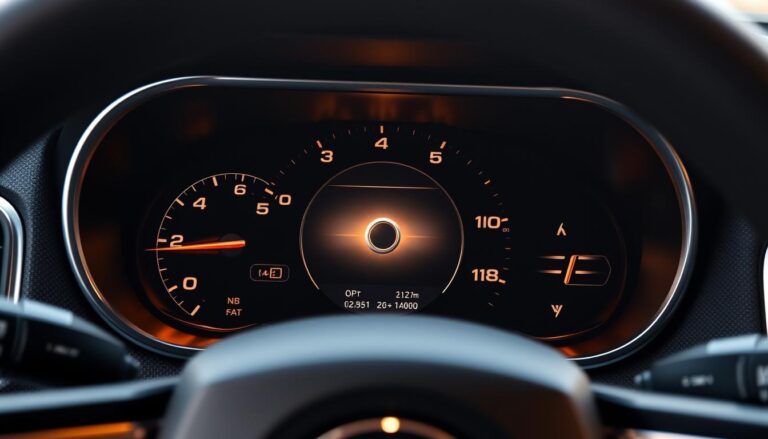This short guide aims to get your vehicle’s modules back to normal fast and safely. It explains why a step-by-step approach matters when modern electronics and a smart charging system rely on correct battery data.
You will learn what to do immediately following a battery swap, how to make sure connections meet spec, and which relearn steps apply across trims and years. The guide flags common issues like erratic idle, warning lights, lost radio presets, and systems that need reinitializing.
Safety first: make sure you have the right tools, a stable power source, and a clean workspace to protect the car’s electronics. Some relearns finish in minutes; others need a full drive cycle over days. For persistent problems, a professional service visit may be the best choice.
Before you proceed, follow a quick checklist: verify the battery and charge level, confirm clean and tight terminals, and be ready to perform resets in order.
Key Takeaways
- Follow a clear, stepwise plan to return modules to normal operation.
- Confirm proper charge and terminal condition before troubleshooting.
- Expect some systems to relearn quickly and others over multiple drive cycles.
- Watch for common post-swap issues like warning lights and lost presets.
- Use proper tools and a stable power source to protect vehicle electronics.
- Seek professional help when owner-level steps do not resolve problems.
Before You Start: What Happens to a Jeep’s Systems After a Battery Swap
When power is removed, many vehicle systems lose learned values and must relearn basic behaviors. Modern cars store short-term calibrations in volatile memory. Losing main power clears those learned fuel trims, transmission adaptives, idle control settings, and HVAC end-of-travel positions until modules relearn.
Many modules expect steady voltage. Swapping old for new batteries can make the control nodes misread state of charge. That can trigger warning lights or strange behavior that usually fades after a proper reset and a drive cycle.
Common owner-reported issues
- Rough or high idle, and stop/start disabled messages.
- Steering angle or calibration prompts, lost radio/clock settings, and TPMS relearn notices.
- Security checks like key fob pairing or radio code prompts.
Owners often post in home forums describing how the engine may stumble or how the car would hesitate while modules relearn. This is normal if the faults clear soon.
Technical note: The BCM, PCM, TCM, and infotainment nodes share CAN messages. A low-voltage event may log temporary faults that self-clear after driving and running built-in relearn sequences.
Cold weather or heavy accessory loads can make symptoms more obvious while the alternator catches up. Document exact warnings and any codes in your posts or discussion threads—time stamps and wording help pinpoint the affected system. Most issues fade with correct procedures; persistent warnings usually mean a deeper issue needs diagnosis.
Preparation and Safety: Make Sure the Battery and Connections Are Right
Start by confirming the physical fit and electrical specs so the vehicle’s systems have a stable foundation.
Verify type, size, and chemistry
Confirm the group size, terminal orientation, and cold cranking amps match the owner’s manual for your model and year.
If the vehicle requires an agm battery, do not substitute a flooded design. AGM units work with stop/start systems and the car’s charging profile.
Clean, tighten, and protect terminals
Inspect cable ends, main grounds, and the hold-down bracket. Corrosion, paint, or loose hardware raises resistance and causes intermittent faults.
Examine the battery sensor on the negative cable for damage or a loose plug; a misreporting sensor will undermine any reset effort.
Confirm full charge and stable voltage
Fully charge the new battery on a smart charger and confirm resting voltage before you begin a reset sequence. Low charge can mask real progress.
- Verify fit and CCA for the Grand Cherokee or other trims by year.
- Check inline fuses and accessory draws that can overload charging during the procedure.
- Use under-hood test posts to monitor voltage while cranking and idling.
“A clean install with proper charge and sensor integrity ensures the following steps actually work.”
Reset Jeep After Battery Replacement: Step-by-Step Methods
Start with a calm, systematic routine to let vehicle modules re-establish normal communications before you drive.
Soft reset basics
Close all doors, remove the key, and let the car sit undisturbed so modules enter sleep. Then perform two or three key-on/ACC cycles without cranking to wake networks gently.

Battery sensor recalibration
With lights and HVAC off, idle for several minutes with minimal load so the battery sensor can read a steady state. Shut down and allow a full sleep period; this helps the BMS recalculate state of charge.
“A quiet wake-up and a full sleep cycle are often enough for the system to relearn accurate charge data.”
Drive cycle to normalize systems
Use gentle acceleration, a steady highway cruise, and calm deceleration with few accessories. This lets transmission adaptives, idle control, and emissions monitors update over miles and days.
Infotainment, TPMS, and settings
After a replaced battery, re-set the clock, re-pair phones, and restore radio presets. Drive at moderate speed to allow TPMS sensors to report; use cluster procedures if the light persists.
| Step | Action | Expected time |
|---|---|---|
| Soft wake | Key-on/ACC cycles, allow sleep | 10–30 minutes |
| Sensor learn | Idle with low load, then sleep | 30–60 minutes |
| Drive cycle | Gentle drive, highway cruise | Several miles to multiple days |
| Settings | Infotainment and TPMS recheck | 5–20 minutes |
Troubleshooting: If the Engine Light or Other Warnings Stay On
If the engine light keeps showing, follow a clear sequence to find the root cause. Start with scans, then verify wiring and charging before replacing parts.

Quick visual and code checks
Scan for codes first. Low-voltage events can create temporary faults, but stored hard faults after you were jumped started may point to a failing component or circuit.
Electrical and charging tests
- Inspect main grounds and the fusebox for loose or oxidized connections; a poor ground mimics many issues.
- Verify alternator output at idle and under load; weak charging can let symptoms return within days.
- Measure key-off parasitic draw; a stuck module may keep systems awake and prevent sleeping.
- Check cables and negative sensor connector pins for internal corrosion or looseness.
“If warnings recur quickly after clearing codes, suspect charging faults or wiring before swapping modules.”
Use a proper DTC tool that reads all modules, and review forum discussion and helpful replies to compare symptom timelines. When uncertain, escalate to professional service and document any steps and posts you view for follow-up.
For deeper reading on recurring discharge causes, see why a battery keeps dying.
Model and Feature Nuances: Grand Cherokee, Auxiliary Battery, and Start-Stop
A second battery and smart charging logic can delay feature recovery even when the main unit reads healthy. Many Grand Cherokee trims and similar models use an auxiliary battery to support start/stop and energy-harvesting features. The vehicle will keep start/stop disabled until both cells reach the required charge thresholds.
What to know about auxiliary battery systems and start/stop behavior
If the auxiliary battery is going bad, symptoms often mirror a weak primary cell: unexpected restarts, accessories rebooting at stops, or intermittent start availability after service. Test both units under load when messages persist.
Access varies by year and trim. Some auxiliary units sit behind trim panels or under the cargo floor. Plan for safe handling and possible memory retention devices if you must remove panels.
- Synchronization: After battery work, the car would need extra runtime for both units to sync with the charging strategy and the battery sensor.
- Computer system monitoring: The vehicle watches charge, temperature, and recent trips; short drives may delay economy features until a full drive cycle completes.
- If problems continue: Have service test both batteries, alternator output, and parasitic draw to find the root cause.
Conclusion
Conclusion: Finish by confirming a clean install, correct group and chemistry, and secure terminals. Verify rest voltage and alternator output so the system can charge normally.
Follow a short routine: perform a soft reset, allow the battery sensor to relearn, and complete a measured drive cycle. Watch for normalized idle and any engine light that returns in a pattern.
If you changed battery and warnings persist, re-check terminal torque, main grounds, and sensor seating. Use community technical discussion and home forums to compare posts, click expand on detailed replies, and view confirmed fixes—but always test on your vehicle first.
When uncertainty remains: seek professional diagnostics to find parasitic draw, failing sensors, or software updates that simple resets won’t solve.
FAQ
What is the quickest safe way to restore normal operation after a new battery install?
Start with a clean, fully charged battery and tight, corrosion-free terminals. Let the vehicle enter sleep, then perform key-on/ACC cycles (without cranking) to reinitialize networks. Idle with minimal loads for a few minutes so the battery sensor can relearn state of charge, then complete a structured drive cycle — gentle acceleration, steady cruise, and deceleration — to allow transmission, idle, and emissions adaptives to normalize.
Why do warning lights or odd behavior appear after changing the battery?
A loss of power clears volatile memory and can make modules misread state-of-charge. That may set temporary faults or disable features like stop/start, one-touch windows, or HVAC calibration. Most symptoms fade after proper relearns and a full drive cycle; persistent codes point to wiring, sensor, or charging faults that need diagnostics.
Do I need a specific battery type or size for my Grand Cherokee or other models?
Yes. Use the group size, terminal orientation, and CCA recommended in your owner’s manual. Many late-model vehicles require an AGM to match the charging profile and stop/start demands. Using the wrong chemistry or size can cause fitment problems and trigger charging or accessory issues.
How do I check the battery sensor and why is it important?
Inspect the negative cable for an inline sensor, ensure connectors are clean, seated and undamaged. The sensor reports voltage, current, and temperature to the charging system; if it misreports, the PCM/BCM can disable functions or mismanage charging, producing recurring alerts even with a good battery.
What basic maintenance should I do before attempting any relearn procedures?
Verify the new battery is fully charged, confirm terminal and ground cleanliness and torque, check the hold-down bracket, and inspect fuses and accessory draws. For vehicles with auxiliary batteries, confirm both units are in good condition. A stable electrical baseline prevents false symptoms during relearn steps.
How long does it take for all modules to relearn and return to normal?
Some relearns take minutes; others require repeated drive cycles over several days. Emissions monitors, transmission adaptives, and certain calibrations often need highway mileage. Expect immediate fixes for infotainment and clocks, while adaptive systems may need time and distance to stabilize.
My stop/start system shows “disabled” after the swap — is this normal and how do I fix it?
It’s common. The system disables until both the charging state and battery sensor readings meet thresholds. Reduce accessory loads, drive for longer periods to raise state-of-charge, and allow the BMS to recalibrate. If the message persists after proper charge and drives, test both main and auxiliary batteries and sensor integrity.
Should I perform infotainment and TPMS resets after replacing a battery?
Yes. Re-enter clock and radio presets, re-pair phones, and perform any head-unit soft-reset menus if needed. For TPMS, drive at moderate speed to allow sensors to re-transmit; use the cluster or manual relearn procedure in the owner’s manual if the light stays on.
What if the check engine light remains on after I changed the battery?
Scan all modules for DTCs first. Low-voltage events often create temporary codes, but persistent or returning codes require checking grounds, fuses, alternator output, parasitic draws, and sensor connectors. Use a full-systems scan tool and document codes and timestamps before replacing parts.
Could an auxiliary battery cause the same problems as the main battery?
Absolutely. On models with an auxiliary battery, a weak auxiliary can mimic main battery failures: intermittent stop/start, accessory reboots, or unavailable features. Both batteries must meet charge thresholds for full functionality; test both under load if issues continue.
How do I perform a safe soft reset without losing settings or causing new errors?
With doors closed and no accessories on, remove the key and let the vehicle sleep for at least 10–15 minutes. Then cycle key-on (ACC) without cranking a few times to reinitialize the CAN network. Avoid using high-draw accessories during this period and re-enter lost settings afterward.
What charging system checks should I run if problems persist after the new battery?
Measure alternator output at idle and under load, check for parasitic draw with the key off, inspect belt condition and tension, and verify stable voltage at the battery posts while cranking and idling. Confirm the battery sensor and grounds are functioning; intermittent voltage is often the root cause of recurring warnings.
Are forum threads and community advice helpful for these issues?
Forums and home discussion boards can offer valuable real-world examples and step-by-step fixes from owners, especially for model/year nuances. Use them to compare symptoms and confirmed solutions, but verify suggested repairs with tests on your vehicle before replacing parts or following nonverified procedures.
When should I take the vehicle to a professional instead of troubleshooting myself?
If warnings persist after proper battery installation, charging confirmation, sensor checks, and a full drive cycle, seek professional diagnostics. Persistent faults, repeated engine light returns, parasitic draws, or suspected module damage require specialized tools and expertise to resolve.


